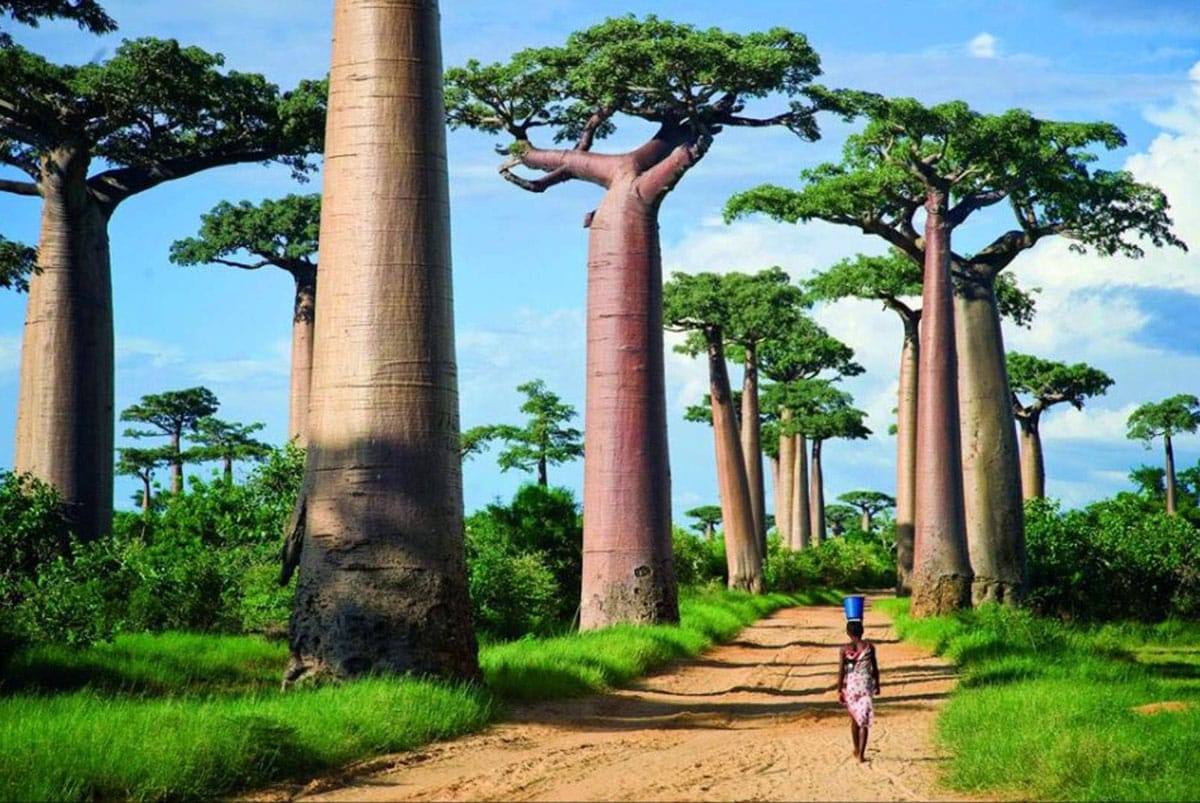The baobabs have always been, by their immense size and their poetic form, trees of legends. The sight of this imperious tree instantly activates our imagination, or our curiosity. According to a local legend, the Gods found the baobabs a little too disdainful, so they tried to lessen their grandeur by replanting them upside down. Madagascar was still favored by the deities because it is the big island that has the largest number of species. Of the 08 existing species, 06 are endemic. Moreover, it is the only place in the world where you can see baobab forests. Baobab, bottle tree… Etymologically, its name comes from the Arabic word “BU HIBAB” meaning “fruit with abundant seeds” and belongs to the bombacaceae family. In the Malagasy language, the Zà, Zabe, Zamena, Zahamena, Ringy, Hazobetroka, Betroka, Renala or even Reniala refer to its very restricted crown and the very corpulent shape of the cylindrical trunk which contrasts with its smooth wall. The spongy trunk composed of a reddish bark presents inside a space containing an impressive quantity of water which reduces in the dry season. The Baobab can stretch over a length of 20 to 30 meters. It only gives leaves for 3 months of the year, in the rainy season. This period is preceded by a flowering period. These flowers then give large berries with an elongated or ovoid shape. The fruits have a diameter of about 10 cm. It is an eternally growing tree that can live for over two thousand years. The Adansonia digitata, native to Africa, offers quite large foliage like the Adansonia gibbosa from Australia, a small species rarely reaching ten meters. The other six, endemic to Madagascar are: Adansonia madagascariensis, Adansonia Zà, Adansonia grandidieri (which is the most common in Madagascar) considered the most admirable of all bottle trees, Adansonia suarenzensis and Adansonia perrieri (endangered, isolated in a small territory in the north of the country); and finally the Adansonia rubrostipa (fony), the smallest species, with a height of four to five meters at most. The Baobabs are in danger, because of the massive deforestation that the Big Island is experiencing globally. Clearing, and of course, bush fires are also threats. From an ecological point of view, collecting the fruits and seeds of the tree prevents its multiplication. In addition, pollinating animals such as lemurs and bats are also rare. Ex-situ conservation remains a major asset for the survival of these oh so emblematic trees of the Big Island.






A legendary tree but so little known. It has its place in the pantheon of the most beautiful works of nature. Yes the Reniala is indeed the mother of the forest in her name but also in her function. Where the baobab grows, life grows.